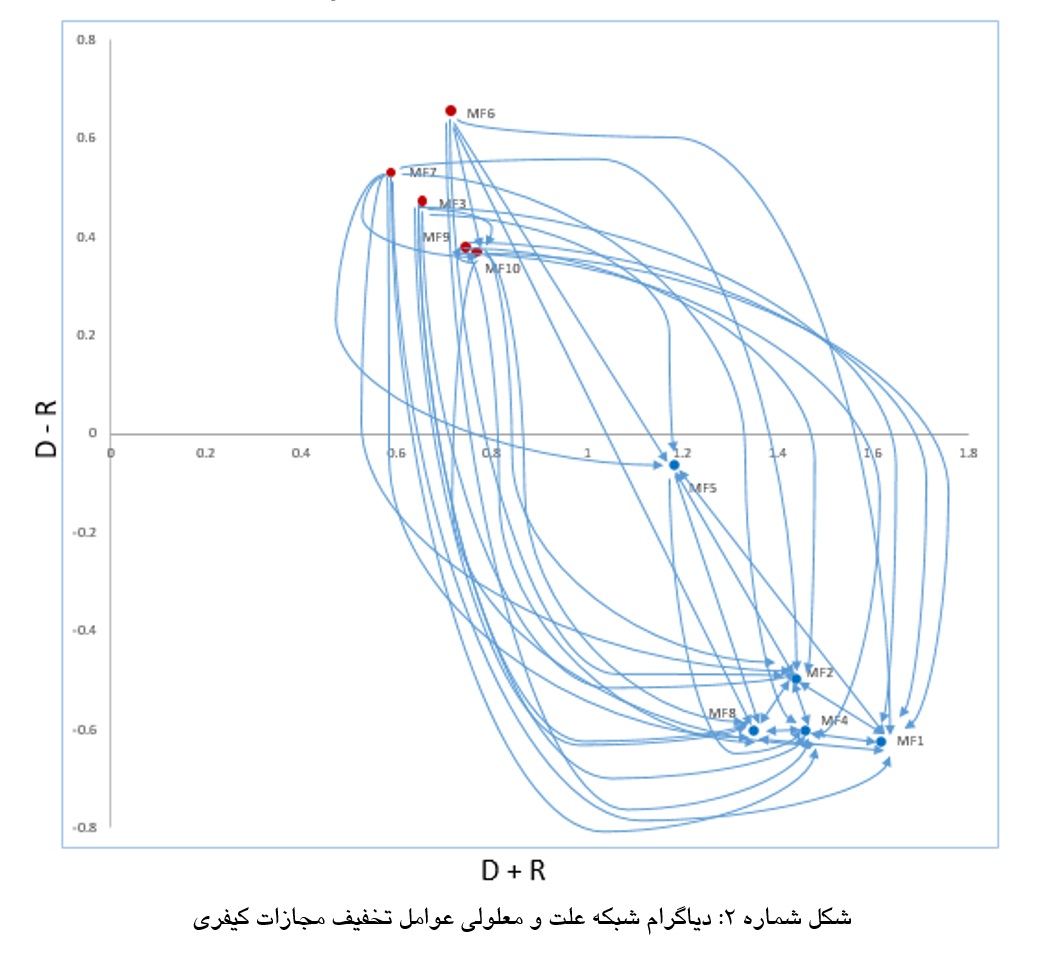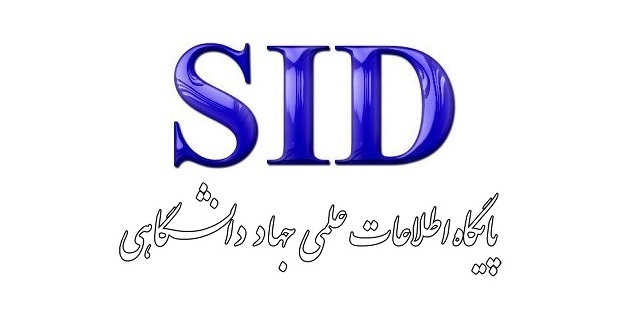Determining Weights and Assessing the Impact of Mitigating Circumstances in the Application of Criminal Punishment Using the Integrated Fuzzy DEMATEL–ANP Method
Keywords:
sentencing mitigation, fuzzy logic, DEMATEL, fuzzy analytic network processAbstract
Although judges frequently apply sentencing mitigation provisions when issuing judicial rulings for many offenses, limited efforts have been made to establish an appropriate framework for using these mitigation rules. Judges are often required to decide the extent of sentence reduction under conditions of ambiguity and uncertainty. The presence of various mitigating circumstances, each with differing levels of influence, makes this decision even more challenging. By using a decision evaluation system and drawing on expert opinions, the causal relationships among mitigating circumstances and their levels of influence and susceptibility were identified. Then, by employing the Analytic Network Process (ANP), the weight of each mitigating circumstance was determined. This combined approach, integrating the Decision-Making Trial and Evaluation Laboratory (DEMATEL) and Fuzzy Analytic Network Process, is referred to as the “fuzzy DANP” method. Based on the results of this analysis, the factor “plaintiff’s forgiveness” had the highest weight and importance in sentencing mitigation compared to other circumstances, while factors such as “special status and prior record of the defendant” had less weight and significance. Moreover, the factor “plaintiff’s forgiveness” demonstrated the greatest influence, whereas the factor “good conduct record” exhibited the highest susceptibility to influence.
References
Abikova, J. (2020). Application of fuzzy DEMATEL–ANP methods for siting refugee camps. Journal of Humanitarian Logistics and Supply Chain Management, 10(3), 347–369. https://doi.org/10.1108/jhlscm-12-2018-0078/full/xml
Abouzari, M. (2017). The application of fuzzy logic in Iranian criminal law [Master’s thesis]. University of Tehran. [In Persian].
Abouzari, M. (2019). A fuzzy perspective on the age of criminal responsibility. Majalle-ye Hoquqi-ye Dadgostari, 73(68), 1–23. [In Persian].
Ahmadi, O., Mortazavi, S. B., Mahabadi, H. A., & Hosseinpouri, M. (2020). Development of a dynamic quantitative risk assessment methodology using fuzzy DEMATEL-BN and leading indicators. Process Safety and Environmental Protection, 142, 15–44. https://doi.org/10.1016/j.psep.2020.04.038
Asadi, L.-S. (2009). Compensation for damage arising from crime in international criminal proceedings. Hoquqi-ye Dadgostari, 73(68), 65–92. [In Persian].
Bagaric, M. (2014). A rational theory of mitigation and aggravation in sentencing: Why less is more when it comes to punishing criminals. Buffalo Law Review, 62, 1159–1228.
Bagherian-Marandi, N., Ravanshadnia, M., & Akbarzadeh-T, M.-R. (2021). Two-layered fuzzy logic-based model for predicting court decisions in construction contract disputes. Artificial Intelligence and Law, 1–32. https://doi.org/10.1007/s10506-021-09292-3
Belton, I. (2018). The role of personal mitigating factors in criminal sentencing judgments: An empirical investigation [Doctoral dissertation, Middlesex University]. Middlesex University Research Repository. (add URL if available)
Bongo, M. F., & Ocampo, L. A. (2018). Exploring critical attributes during air traffic congestion with a fuzzy DEMATEL–ANP technique: A case study in Ninoy Aquino International Airport. Journal of Modern Transportation, 26(2), 147–161. https://doi.org/10.1007/s40534-017-0150-x/tables/9
Büyüközkan, G., & Ifi, G. (2012). A novel hybrid MCDM approach based on fuzzy DEMATEL, fuzzy ANP and fuzzy TOPSIS to evaluate green suppliers. Expert Systems with Applications, 39(3), 3000–3011. https://doi.org/10.1016/j.eswa.2011.08.162
Chen, Y., Jin, Q., Fang, H., Lei, H., Hu, J., Wu, Y., Chen, J., Wang, C., & Wan, Y. (2019). Analytic network process: Academic insights and perspectives analysis. Journal of Cleaner Production, 235, 1276–1294. https://doi.org/10.1016/j.jclepro.2019.07.016
Chen, Z., Ming, X., Zhang, X., Yin, D., & Sun, Z. (2019). A rough-fuzzy DEMATEL-ANP method for evaluating sustainable value requirement of product-service system. Journal of Cleaner Production, 228, 485–508. https://doi.org/10.1016/j.jclepro.2019.04.145
Dehghan, M., Ghatee, M., & Hashemi, B. (2009). Inverse of a fuzzy matrix of fuzzy numbers. International Journal of Computer Mathematics, 86(8), 1433–1452. https://doi.org/10.1080/00207160701874789
Dubois, D., & Prade, H. (1978). Operations on fuzzy numbers. International Journal of Systems Science, 9(6), 613–626. https://doi.org/10.1080/00207727808941724
Ehsanifar, M., Hamta, N., & Esmaeilzadeh, F. (2019). Identifying and ranking effective lean production factors on economic performance of production companies in Mazandaran province of Iran based on FDANP approach. Journal of Industrial Engineering and Management Studies, 6(2), 65–77. https://doi.org/10.22116/jiems.2019.92258
Fallahi, A. (2016). Mitigation of punishment in the 2013 Islamic Penal Code. Majalle-ye Hoquqi-ye Dadgostari, 82(102), 109–127. [In Persian].
Fallahi, A.-Q. (2018). Mitigation of punishment in the 2013 Islamic Penal Code. Hoquqi-ye Dadgostari, 82(102), 109–127. [In Persian].
Farnam, H. (2022). Critiques of restorative justice. Pazhuhesh-haye Hoquq-e Jaza va Jorm-shenasi, 20(10), 397–415. [In Persian].
Gabus, A., & Fontela, E. (1972). World problems, an invitation to further thought within the framework of DEMATEL (pp. 12–14). Battelle Geneva Research Center.
Gul, M. (2019). Emergency department ergonomic design evaluation: A case study using fuzzy DEMATEL-focused two-stage methodology. Health Policy and Technology, 8(4), 365–376. https://doi.org/10.1016/j.hlpt.2019.09.005
Hessick, C. B., & Berman, D. A. (2016). Towards a theory of mitigation. Boston University Law Review, 96, 161–227.
Hsu, C. C., & Liou, J. J. H. (2013). An outsourcing provider decision model for the airline industry. Journal of Air Transport Management, 28, 40–46. https://doi.org/10.1016/j.jairtraman.2012.12.009
Izadpanah, F., Shiehmorteza, M., Rahimpour, A., & Moradi, M. (2020). Prioritizing medication management criteria of national hospital accreditation standards using FDANP model. Journal of Pharmaceutical Research International, 32(3), 69–77. https://doi.org/10.9734/jpri/2020/v32i330415
Jafari-Langarudi, M. (1989). Terminology of law. Ganj-e Danesh. [In Persian].
Janeela Theresa, M. M., & Joseph Raj, V. (2016). A maximum spanning tree-based dynamic fuzzy supervised neural network architecture for classification of murder cases. Soft Computing, 20, 2353–2365. https://doi.org/10.1007/s00500-015-1669-2
Kabak, M. (2013). A fuzzy DEMATEL-ANP based multi-criteria decision-making approach for personnel selection. Journal of Multiple-Valued Logic and Soft Computing, 20, 1–20. (pages if available)
Kedir, N., & Fayek, A. R. (2023). Integrated FAHP-FDEMATEL for determining causal relationships in construction crew productivity modelling. Canadian Journal of Civil Engineering, 50(11), 923–935. https://doi.org/10.1139/cjce-2022-0425
Khan, A. U., Khan, A. U., & Ali, Y. (2020). Analytical hierarchy process (AHP) and analytic network process methods and their applications: A twenty-year review from 2000–2019. International Journal of the Analytic Hierarchy Process, 12(3), 369–402. https://doi.org/10.13033/ijahp.v12i3.822
Kheybari, S., Rezaie, F. M., & Farazmand, H. (2020). Analytic network process: An overview of applications. Applied Mathematics and Computation, 367, 124780. https://doi.org/10.1016/j.amc.2019.124780
Lin, C. J., & Wu, W. W. (2008). A causal analytical method for group decision-making under fuzzy environment. Expert Systems with Applications, 34(1), 205–213. https://doi.org/10.1016/j.eswa.2006.08.012
Liou, J. J. H., Tzeng, G. H., & Chang, H. C. (2007). Airline safety measurement using a hybrid model. Journal of Air Transport Management, 13(4), 243–249. https://doi.org/10.1016/j.jairtraman.2007.04.008
Martínez, L., Rodriguez, R. M., & Herrera, F. (2015). The 2-tuple linguistic model. Springer. https://doi.org/10.1007/978-3-319-24714-4
Mavi, R. K., & Standing, C. (2018). Critical success factors of sustainable project management in construction: A fuzzy DEMATEL-ANP approach. Journal of Cleaner Production, 194, 751–765. https://doi.org/10.1016/j.jclepro.2018.05.120
Medalla, M. E. F., Yamagishi, K. D., Tiu, A. M. C., Tanaid, R. A. B., Abellana, D. P. M., Caballes, S. A. A., Jabilles, E. M. Y., Selerio, E. F., Bongo, M. F., & Ocampo, L. A. (2021). Relationship mapping of consumer buying behavior antecedents of secondhand clothing with fuzzy DEMATEL. Journal of Management Analytics, 8(3), 530–568. https://doi.org/10.1080/23270012.2020.1870878
Mizumoto, M., Toyoda, J., & Tanaka, K. (1969). Some considerations on fuzzy automata. Journal of Computer and System Sciences, 3(4), 409–422. https://doi.org/10.1016/s0022-0000(69)80029-2
Mohammad-Hasan, H., & Hamid, A. (2020). A comparative study of complicity in crime in Iranian, U.S., and Scottish criminal law. Pazhuhesh-haye Hoquqi, 19(43002011), 125–156. [In Persian].
Mohammad-Nasl, A., & Nourian, G. R. (2020). Realism in criminal decision-making. Pazhuhesh-haye Hoquq-e Jaza va Jorm-shenasi, 16(8), 113–134. [In Persian].
Muerza, V., Milenkovic, M., Larrodé, E., & Bojovic, N. (2024). Selection of an international distribution center location: A comparison between stand-alone ANP and DEMATEL-ANP applications. Research in Transportation Business & Management, 56, 101135. https://doi.org/10.1016/j.rtbm.2024.101135
Muslimov, I. (2024). Review of some cases of mitigation of punishment characterizing the nature of the crime in the criminal law of the Republic of Uzbekistan. Current Approaches and New Research in Modern Sciences, 3(3), 128–133. (add URL/DOI if available)
Naghavi, M., Yousefzadeh, A., & Shohanipour, H. (2022). A comparative study of mitigation of punishment in Iranian and Algerian law. Motale‘at-e ‘Olum-e Siyasi, Hoquq va Feqh, 42(8), 233–253. [In Persian].
Naghavi, M., Yousefzadeh, A., & Shohanipour, H. (2022). A comparative study of mitigation of punishment in Iranian and Algerian law. Motale‘at-e ‘Olum-e Siyasi, Hoquq va Feqh, 42(8), 233–253. [In Persian]. (Duplicate entry retained as provided)
Nalbant, K. G. (2024). A methodology for personnel selection in business development: An interval type-2 based fuzzy DEMATEL-ANP approach. Heliyon, 10(1), e23698. https://doi.org/10.1016/j.heliyon.2023.e23698
Ocampo, L. A., Himang, C. M., Kumar, A., & Brezocnik, M. (2019). A novel multiple criteria decision-making approach based on fuzzy DEMATEL, fuzzy ANP and fuzzy AHP for mapping collection and distribution centers in reverse logistics. Advances in Production Engineering and Management, 14(3), 297–322. https://doi.org/10.14743/apem2019.3.329
Ocampo, L., Deiparine, C. B., & Go, A. L. (2020). Mapping strategy to best practices for sustainable food manufacturing using fuzzy DEMATEL-ANP-TOPSIS. Engineering Management Journal, 32(2), 130–150. https://doi.org/10.1080/10429247.2020.1733379
Persian sources (transliterated; Gregorian year; English titles; [In Persian])
Pourmoghadam, T. (2024). A criminological study of the law on reducing the punishment of penal servitude approved in 2019. Power System Technology, 48(2), 1084–1103. https://doi.org/10.52783/pst.615
Puente, J., Fernandez, I., Gomez, A., & Priore, P. (2020). Integrating sustainability in the quality assessment of EHEA institutions: A hybrid FDEMATEL-ANP-FIS model. Sustainability, 12(5), 1707. https://doi.org/10.3390/su12051707
Rodríguez Rodríguez, C. R., Amoroso Fernández, Y., Zuev, D. S., Peña Abreu, M., & Zulueta Veliz, Y. (2023). M-LAMAC: A model for linguistic assessment of mitigating and aggravating circumstances of criminal responsibility using computing with words. Artificial Intelligence and Law, 1–43. https://doi.org/10.1007/s10506-023-09365-8/metrics
Rossmanith, K., Tudor, S., & Proeve, M. (2018). Courtroom contrition: How do judges know? Griffith Law Review, 27(3), 366–384. https://doi.org/10.1080/10383441.2018.1557588
Saaty, T. L. (1980). The analytic hierarchy process (AHP). Journal of the Operational Research Society, 41(11), 1073–1076.
Saaty, T. L. (2004a). Fundamentals of the analytic network process—Dependence and feedback in decision-making with a single network. Journal of Systems Science and Systems Engineering, 13(2), 129–157. https://doi.org/10.1007/s11518-006-0158-y
Saaty, T. L. (2004b). Fundamentals of the analytic network process—Dependence and feedback in decision-making with a single network. Journal of Systems Science and Systems Engineering, 13(2), 129–157. https://doi.org/10.1007/s11518-006-0158-y
Sabahi, F. (2013). Theory of logic and inexact reasoning based on extended fuzzy logic: With a judicial and medical decision-making approach [Doctoral dissertation]. Ferdowsi University of Mashhad. [In Persian].
Sabahi, F., & Akbarzadeh-T, M. R. (2015). Extended fuzzy logic: Sets and systems. IEEE Transactions on Fuzzy Systems, 24(3), 530–543. https://doi.org/10.1109/tfuzz.2015.2496818
Sadegh, S. (2021). Mitigating factors in the judgments of the International Criminal Court. Pazhuhesh-haye Hoquq-e Jaza va Jorm-shenasi, 8(16001340), 53–78. [In Persian].
Selerio, E. F., Arcadio, R. D., Medio, G. J., Natad, J. R. P., & Pedregosa, G. A. (2021). On the complex causal relationship of barriers to sustainable urban water management: A fuzzy multi-criteria analysis. Urban Water Journal, 18(1), 12–24. https://doi.org/10.1080/1573062x.2020.1846064
Selerio, E., Caladcad, J. A., Catamco, M. R., Capinpin, E. M., & Ocampo, L. (2022). Emergency preparedness during the COVID-19 pandemic: Modelling the roles of social media with fuzzy DEMATEL and analytic network process. Socio-Economic Planning Sciences, 82, 101217. https://doi.org/10.1016/j.seps.2021.101217
Taal, A., Sherer, J. A., Bent, K.-A., & Fedeles, E. R. (2016). Cognitive computing and proposed approaches to conceptual organization of case law knowledge bases: A proposed model for information preparation, indexing, and analysis. Artificial Intelligence and Law, 24(4), 347–370.
Tseng, M. L. (2011). Using hybrid MCDM to evaluate the service quality expectation in linguistic preference. Applied Soft Computing, 11(8), 4551–4562. https://doi.org/10.1016/j.asoc.2011.08.011
Uygun, Ö., Kaçamak, H., & Kahraman, Ü. A. (2015). An integrated DEMATEL and fuzzy ANP techniques for evaluation and selection of outsourcing provider for a telecommunication company. Computers & Industrial Engineering, 86, 137–146. https://doi.org/10.1016/j.cie.2014.09.014
Wu, W. W., & Lee, Y. T. (2007). Developing global managers’ competencies using the fuzzy DEMATEL method. Expert Systems with Applications, 32(2), 499–507. https://doi.org/10.1016/j.eswa.2005.12.005
Yang, J., Liu, C., Zheng, J., Xiao, H., Yuan, J., & Qin, Y. (2020). Identification of influence factors of emergency management evaluation of agro-products quality and safety based on fuzzy DEMATEL method. In Proceedings of the 2020 3rd International Conference on Artificial Intelligence and Big Data (ICAIBD 2020) (pp. 275–278). IEEE. https://doi.org/10.1109/icaibd49809.2020.9137454
Yeh, T. M., & Huang, Y. L. (2014). Factors in determining wind farm location: Integrating GQM, fuzzy DEMATEL, and ANP. Renewable Energy, 66, 159–169. https://doi.org/10.1016/j.renene.2013.12.003
Zadeh, L. A. (1965). Fuzzy sets. Information and Control, 8(3), 338–353. https://doi.org/10.1016/s0019-9958(65)90241-x
Zadeh, L. A. (1975a). Fuzzy logic and approximate reasoning—In memory of Grigore Moisil. Synthese, 30(3–4), 407–428. https://doi.org/10.1007/bf00485052/metrics
Zadeh, L. A. (1975b). The concept of a linguistic variable and its application to approximate reasoning—Part I. Information Sciences, 8(3), 199–249. https://doi.org/10.1016/0020-0255(75)90036-5
Zolbanin, H. M., Delen, D., Crosby, D., & Wright, D. (2020). A predictive analytics-based decision support system for drug courts. Information Systems Frontiers, 22, 1323–1342. https://doi.org/10.1007/s10796-019-09946-1

Downloads
Published
Submitted
Revised
Accepted
Issue
Section
License
Copyright (c) 2025 محسن امیری (نویسنده); رضا مداحی (نویسنده مسئول); بیتا یزدانی, زهرا بهشتی (نویسنده)

This work is licensed under a Creative Commons Attribution-NonCommercial 4.0 International License.






